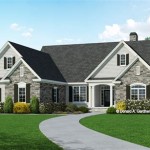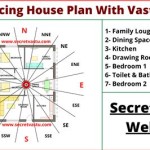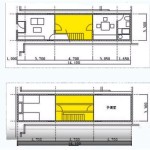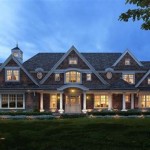Original Craftsman House Plans: A Return to Timeless Design
The Craftsman architectural style, born in the early 20th century as a reaction against the ornate Victorian era, continues to resonate with homeowners today. Its emphasis on natural materials, handcrafted details, and simple, functional living spaces offers a timeless appeal that transcends fleeting design trends. Original Craftsman house plans provide a blueprint for capturing the essence of this beloved style, allowing homeowners to build new homes that embody the spirit of the Arts and Crafts movement.
Key Features of Original Craftsman House Plans:
*
Low-pitched roofs:
Often gabled or hipped, with wide overhanging eaves. *Exposed rafters and beams:
Structural elements become decorative features. *Front porches:
Inviting spaces for relaxation and socializing, often featuring tapered columns or pedestals. *Natural materials:
Emphasis on wood, stone, and brick. *Built-in cabinetry and shelving:
Practical storage solutions integrated seamlessly into the design. *Emphasis on handcrafted details:
Visible joinery, stained glass, and decorative tilework. *Open floor plans:
Promoting a sense of connection between living spaces.Original Craftsman house plans typically prioritize functionality and livability. The designs often incorporate built-in features like window seats, bookcases, and fireplaces, maximizing space and creating cozy nooks within the home. These plans also emphasize the connection between indoor and outdoor living, with porches, patios, and gardens often playing integral roles in the overall design.
Variations in Original Craftsman House Plans:
*
Bungalow:
A single-story or one-and-a-half-story dwelling with a low-pitched roof and a prominent front porch. *Four-Square:
A two-story design with four equal-sized rooms on each floor, often featuring a large central dormer. *Prairie School:
Inspired by the work of Frank Lloyd Wright, characterized by horizontal lines, low roofs, and an emphasis on integration with the surrounding landscape.While these represent some of the more common Craftsman subtypes, a wide range of variations exists. Some designs incorporate elements of other architectural styles, resulting in unique hybrid forms. For example, a Craftsman house might feature Tudor-inspired half-timbering or Spanish Colonial-style stucco detailing. The adaptability of the Craftsman aesthetic allows for considerable flexibility in design, enabling homeowners to personalize their homes to reflect their individual tastes and preferences.
Finding and Adapting Original Craftsman House Plans:
*
Architectural archives:
Many universities and historical societies maintain collections of original architectural drawings. *Online plan repositories:
Numerous websites offer digitized versions of vintage house plans. *Working with an architect:
An architect can help adapt existing plans to meet modern building codes and lifestyle needs. *Salvaging plans from existing homes:
With careful research and professional guidance, plans can sometimes be extracted from existing Craftsman-era structures.When adapting original plans, it's crucial to consider modern building codes and energy efficiency standards. Updating insulation, windows, and HVAC systems can significantly improve the performance and comfort of a newly built Craftsman home. An architect or experienced builder can provide valuable guidance throughout the adaptation and construction process, ensuring that the finished product remains true to the spirit of the original design while meeting contemporary standards.
Benefits of Choosing Original Craftsman House Plans:
*
Timeless appeal:
Craftsman homes possess an enduring charm that transcends passing trends. *Quality construction:
Original plans often prioritize durable materials and robust construction techniques. *Customization potential:
Craftsman designs can be adapted to suit individual needs and preferences. *Connection to history:
Building from original plans offers a unique opportunity to connect with the past.Choosing original Craftsman house plans provides a starting point for creating a home that is both beautiful and functional. By understanding the key features and variations of the style, and by working with experienced professionals, homeowners can build new homes that capture the enduring spirit of the Arts and Crafts movement.
Considerations for Building a Craftsman Home:
*
Budget:
Craftsman homes often involve intricate detailing and high-quality materials, which can impact the overall cost. *Site selection:
The lot size and topography should complement the chosen house plan. *Local regulations:
Building codes and zoning ordinances may influence design choices. *Contractor selection:
Choosing a builder experienced with Craftsman construction is essential for achieving the desired results.Careful planning and attention to detail are essential for successfully executing an original Craftsman house plan. Understanding the potential challenges and working with a qualified team of professionals can help ensure a smooth and rewarding building process.

Practical Homes 1926 Craftsman House Plans Vintage Bungalow Exterior

The Varina 1920s Bungalow 1923 Craftsman Style From Standard Homes Company Hous House Plans

1925 26 C L Bowes House Plans Craftsman Bungalow Vintage

Plan No R 856 C 1918 Cottage House By A E Stillwell Vintage Bungalows Plans Transitio Bungalow Floor

Original Craftsman Bungalow House Plans Cottage Small

51 Smallish Mostly Vintage House Plans Ideas

1915 Cozy Bungalow Vintage Plan With Garage Wm A Radford Original Design

Craftsman House Plans Home Floor Monster

Awesome 1912 Craftsman House Plan Design No Los Angeles Investment Co Practical Bun Vintage Plans

1916 Craftsman House Plans








